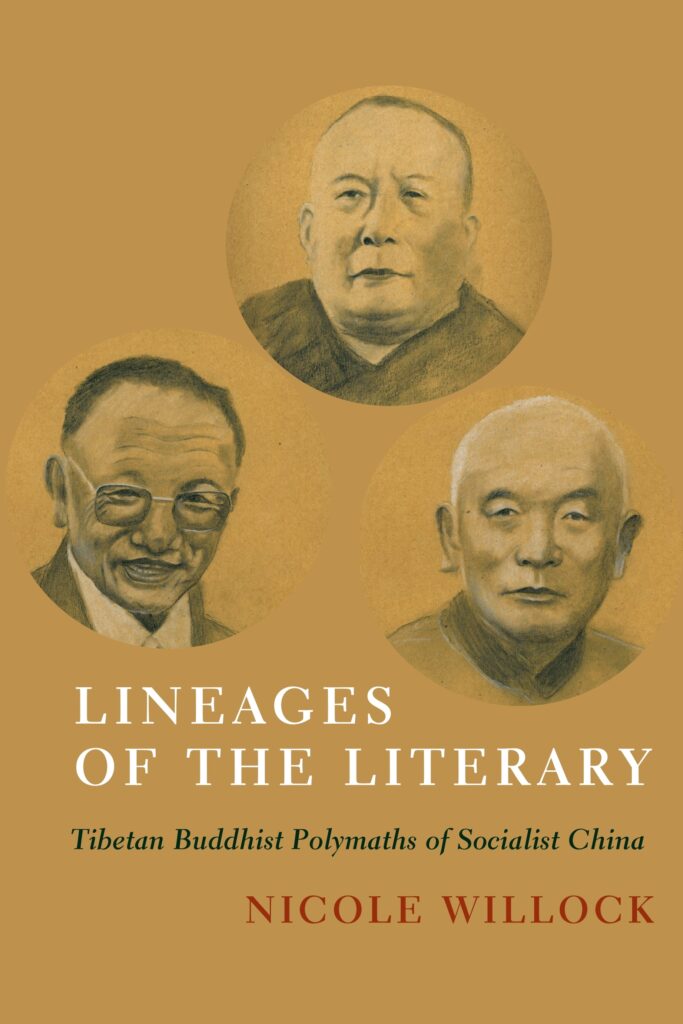E. Gene Smith Inner Asia Book Prize
Named to honor the distinguished scholar of Tibet, Mongolia, and other areas of Inner Asia, the E. Gene Smith Book Prize, offered biennially, honors outstanding and innovative scholarship across discipline and country of specialization for a book on Inner Asia.
Books nominated may address either contemporary or historical topics in any field of the humanities or the social sciences related to any of the countries and regions in the wide swath of Asia stretching from the eastern border of Afghanistan to Mongolia, i.e., Tibet, Xinjiang or Mongolia, including peoples coming recently from those areas.
2026 Prize
$1,000 award for the author.
Guidelines for Submission
- Only books bearing a copyright date of 2023 or 2024 will be eligible for the 2026 award.
- Publishers must complete the book nomination form.
- Each press may nominate a maximum of six books for the Smith Prize.
- Only publishers may nominate books.
- Upon receipt of a completed nomination form, publishers will be provided with addresses for prize committee members. A copy of each entry, clearly labeled “E. Gene Smith Inner Asia Book Prize,” must be sent to each member of the appropriate committee.
Books published by the Association for Asian Studies, Inc. are ineligible for consideration for prizes administered by the Association for Asian Studies. Employees of the Association are excluded from consideration for AAS book prizes, subventions, and grants. Publishers should check with authors to certify that they are not employed by the Association for Asian Studies, Inc.
Deadline
Nominations for the 2026 E. Gene Smith Inner Asia Book Prize will open in spring 2025.
2024 Awards
Winner and Citation

Nicole Willock, Lineages of the Literary: Tibetan Buddhist Polymaths of Socialist China (Columbia University Press)
This is a brilliant book, one that will appeal to specialists and nonspecialists alike. In graceful prose, and with both erudition and sensitivity, Nicole Willock reveals a world most of us could never have seen. The title, Lineages of the Literary, announces her work as a textual study. Willock delights in the subtleties of the texts, and she conveys some of that delight to those of us who do not read Tibetan. But her own wordplay begins with the subtitle. What can it mean to describe the three men whose portraits grace the cover as “Tibetan Buddhist Polymaths of Socialist China?” How did they fare as Buddhists? If they were of Socialist China, were they socialist? Willock resolutely refuses to assign them to the categories of “resisters” or “collaborators,” focusing instead on the ways they worked within state institutions to promote scholarship and maintain religious traditions. The Three Polymaths were both Buddhist adepts and participants in, though at times also targets of, state formation in the People’s Republic of China.
By combining literary analysis, fieldwork, Buddhology, political history, and biography, Willock produces an exceptionally rich portrait of individuals facing difficult choices in times of political turmoil. Like many other Tibetan monastics, all three figures suffered during the Cultural Revolution, and two spent years in prison. Rehabilitated in the 1980s, the three gained positions as professors and returned to writing. In the classroom they were constrained to appear in secular guise; beyond university walls they returned to religious teaching and worked to restore temples. In recognition of their great learning and heroic efforts, Tibetans began to refer to them as the Three Polymaths, after three tenth-century monks who had earned the epithet for saving Tibetan Buddhism from “dark times” during the reign of Langdarma.
Through careful readings of the scholars’ voluminous writings Willock reveals how they mastered Tibetan religious and literary traditions, protected them in very difficult circumstances, and helped pass them on to new generations. But instead of a simple story of damage and “revival,” she offers one of transformation. One of the polymaths, subjected to a public struggle session during the Cultural Revolution, commemorated the event not in a chronicle of suffering but instead in a “song of spiritual realization.”
Willock has crafted an account of Tibetan Buddhism in China since 1949 that is at once scholarly and optimistic. It is likely to shape the field of Tibetan studies for years to come.
Honorable Mention

Past Awards
E. Gene Smith Inner Asia Book Prize
2013 Jacob Dalton, The Taming of the Demons: Violence and Liberation in Tibetan Buddhism
2014 Claire E. Harris, The Museum on the Roof of the World: Art, Politics, and the Representation of Tibet
2015 Emily Yeh, Taming Tibet: Landscape Transformation and the Gift of Chinese Development
2016 Sarah Jacoby, Love and Liberation: The Autobiographical Writings of the Tibetan Buddhist Visionary Sera Kandro
2017 Janet Gyatso, Being Human in a Buddhist World: An Intellectual History of Medicine in Early Modern Tibet
2018 Tom Cliff, Oil and Water: Being Han in Xinjiang
2020 Max Oidtmann, Forging the Golden Urn: The Qing Empire and the Politics of Reincarnation in Tibet
2022 Melvyn C. Goldstein, A History of Modern Tibet, Volume 4: In the Eye of the Storm, 1957-1959; Honorable mention, Brenton Sullivan, Building a Religious Empire: Tibetan Buddhism, Bureaucracy, and the Rise of the Gelukpa

